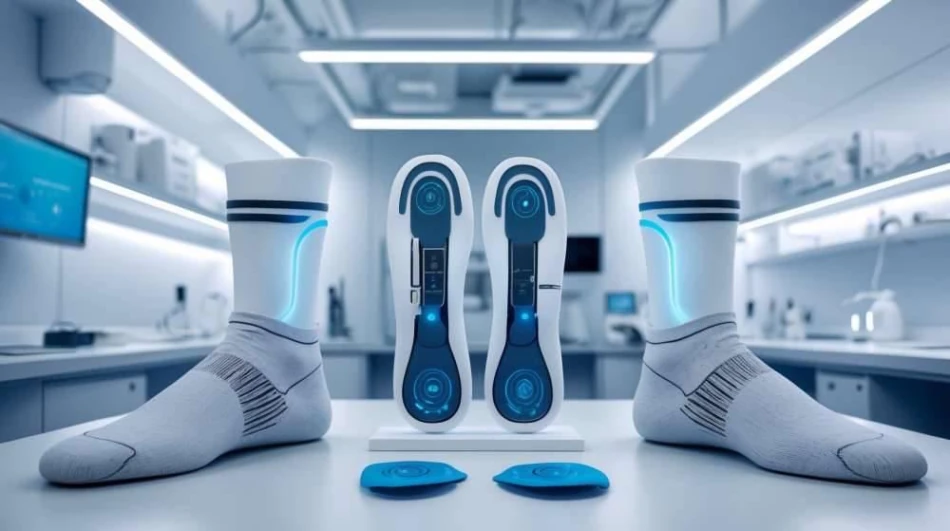
Innovative Sensor Integration Revolutionizes Diabetic Foot Care
Smart Soles and AI: Abu Dhabi Researchers Pioneer Breakthrough in Diabetic Foot Care
A groundbreaking study from Khalifa University in Abu Dhabi has unveiled how artificial intelligence, advanced sensors, and 3D printing can revolutionize the prevention and treatment of diabetic foot complications. The research demonstrates how smart insoles, temperature-monitoring socks, and AI-powered alert systems could dramatically reduce the 85% of foot amputations globally caused by diabetic ulcers.
The Global Diabetic Foot Crisis
Type 2 diabetes represents one of the world's fastest-growing health challenges, with lower limb complications emerging as among the most severe consequences. Diabetic foot conditions typically progress from ulceration to infection, and in severe cases, amputation becomes inevitable. The statistics paint a stark picture: approximately 85% of diabetes-related foot amputations stem from ulcers, with a staggering 65% recurrence rate within five years.
This creates both a humanitarian crisis and an enormous economic burden on healthcare systems worldwide. Traditional monitoring approaches rely heavily on periodic clinical visits, often missing the critical early warning signs that could prevent severe complications.
Technology-Driven Prevention Solutions
Smart Wearable Integration
The Khalifa University research team, led by researchers including Doaa Kousaji, Dr. Mohammed Awad, and Dr. Herbert Jelinek, has developed a comprehensive approach combining multiple technologies. Their smart insoles continuously monitor pressure distribution across the foot, identifying dangerous pressure points before they develop into ulcers.
The intelligent socks measure both temperature and humidity levels—critical indicators of inflammation or infection. These devices connect to smartphone applications that can instantly alert both patients and healthcare providers when concerning patterns emerge.
Therapeutic Features
Beyond monitoring, some devices incorporate active treatment capabilities. Red light therapy and temperature regulation features are embedded directly into wearable devices, enabling immediate therapeutic intervention when problems are detected. This represents a shift from reactive to proactive diabetic care management.
Market and Healthcare System Implications
This technology addresses a massive global market opportunity. With diabetes affecting over 500 million people worldwide, and diabetic foot complications representing one of the most expensive aspects of diabetes care, the commercial potential is substantial. Healthcare systems spending billions annually on diabetic foot treatment and amputation procedures could see significant cost reductions through early intervention.
The UAE's investment in this research aligns with its broader healthcare innovation strategy, positioning the nation as a leader in medical technology development alongside established hubs like Singapore and Switzerland.
Global Context and Competitive Landscape
This research emerges as digital health monitoring experiences unprecedented growth. Similar initiatives in South Korea and Germany have focused on diabetes management, but the Abu Dhabi team's integrated approach to diabetic foot care specifically appears to offer unique advantages.
The timing coincides with increased healthcare digitization accelerated by the pandemic, creating favorable conditions for adoption. Insurance companies and healthcare providers are increasingly receptive to technologies that demonstrate clear cost-benefit advantages through prevention rather than treatment.
Clinical Validation and Future Outlook
The research, published in a specialized journal focused on neural engineering and rehabilitation, involved collaboration with Sheikh Shakhbout Medical City in Abu Dhabi, ensuring clinical relevance. The involvement of vascular surgery specialists Dr. Mohammed Bajunaid and Dr. Abeer Al-Anzi provides crucial medical expertise for real-world application.
The implications extend beyond individual patient care. This technology could reshape diabetes management protocols globally, shifting emphasis from crisis intervention to continuous monitoring and prevention. For healthcare investors and medical device companies, this represents a clear growth sector with strong clinical evidence and significant market demand.
Most Viewed News

 Omar Rahman
Omar Rahman






